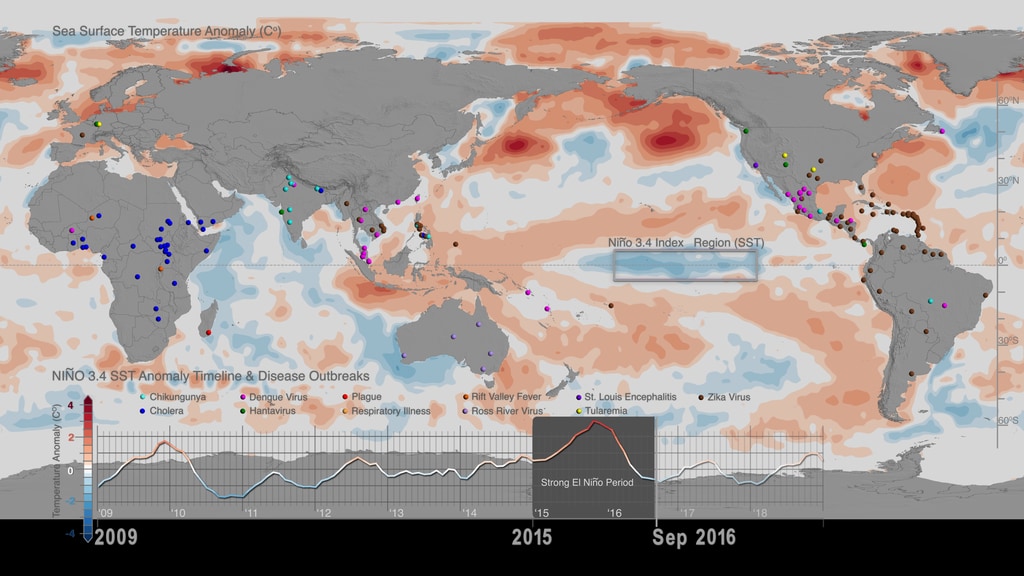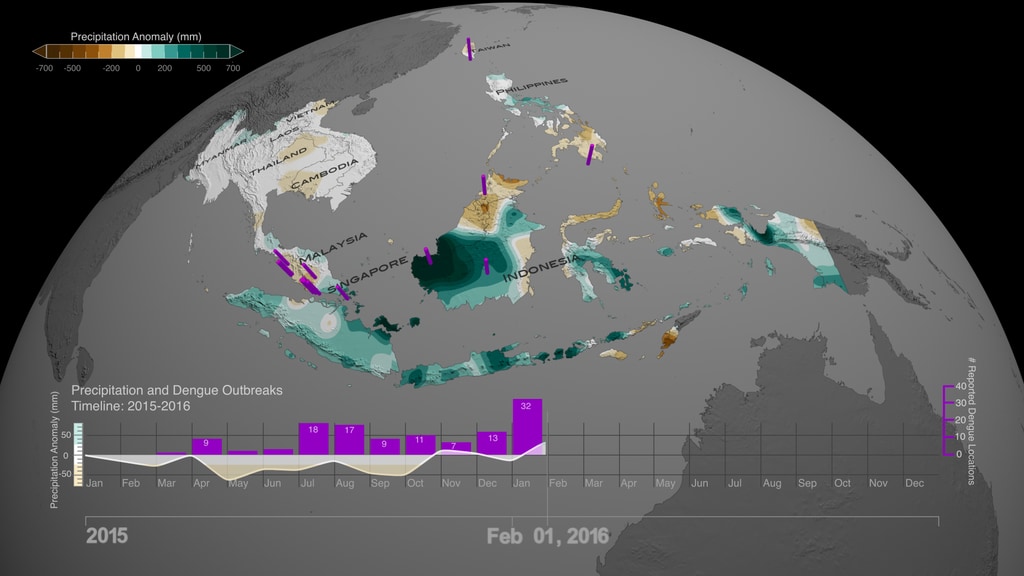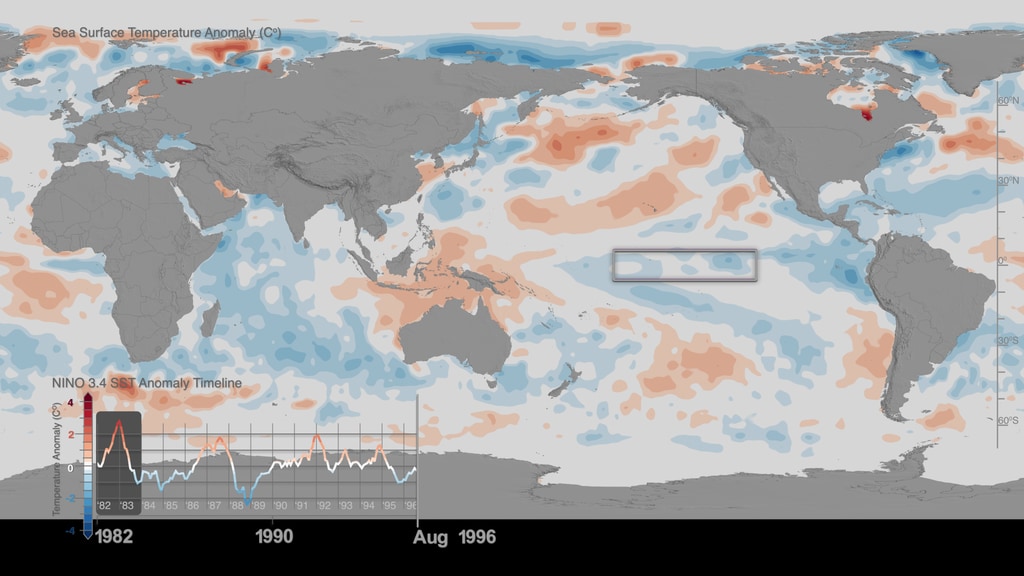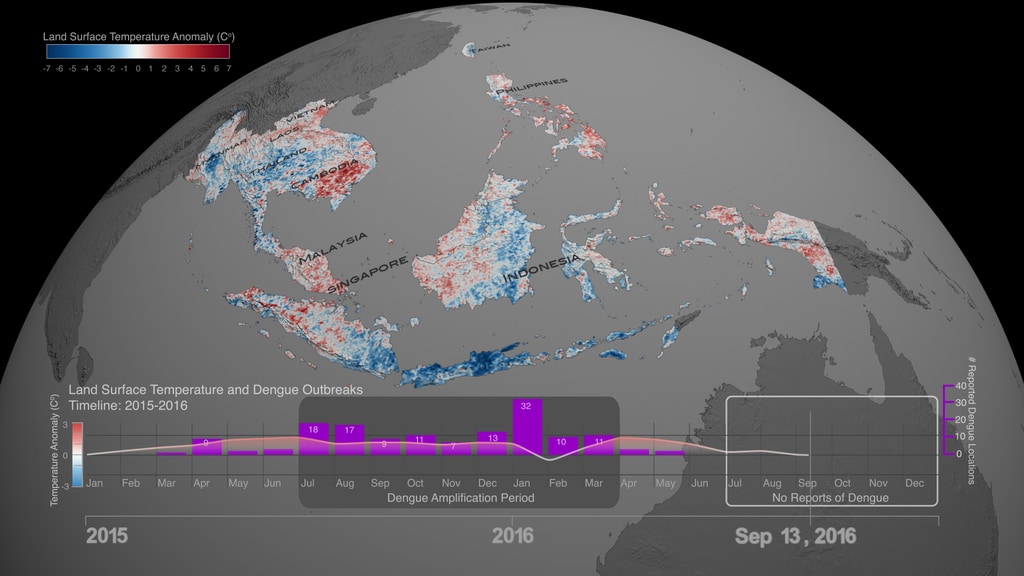2015-2016 El Niño Triggered Disease Outbreaks Across the Globe
The 2015-2016 El Niño event brought weather conditions that triggered regional disease outbreaks throughout the world, according to a new NASA study that is the first to comprehensively assess the public health impacts of the major climate event on a global scale.
El Niño is an irregularly recurring climate pattern characterized by warmer than usual ocean temperatures in the equatorial Pacific, which creates a ripple effect of anticipated weather changes in far-spread regions of Earth. During the 2015-2016 event, changes in precipitation, land surface temperatures and vegetation created and facilitated conditions for transmission of diseases, resulting in an uptick in reported cases for plague and hantavirus in Colorado and New Mexico, cholera in Tanzania, and dengue fever in Brazil and Southeast Asia, among others.
- Climate Indicators
- Diseases/Epidemics
- Earth Science
- El Nino
- El Nino Southern Oscillation
- Environmental science
- Geology
- HDTV
- Human Dimensions
- Human geography
- Human Health
- Land Surface
- land surface temperature
- Land Temperature
- Ocean Temperature
- Oceans
- Physical oceanography
- sea surface temperature
- Teleconnections
Credits
Please give credit for this item to:
NASA's Goddard Space Flight Center
-
Producers
- LK Ward (USRA)
- Matthew R. Radcliff (USRA)
-
Writer
- Samson K. Reiny (Wyle Information Systems)
-
Visualizer
- Helen-Nicole Kostis (USRA)
-
Technical support
- Aaron E. Lepsch (ADNET Systems, Inc.)
-
Scientists
- Assaf Anyamba (USRA)
- Radina Soebiyanto (USRA)
Release date
This page was originally published on Thursday, February 28, 2019.
This page was last updated on Wednesday, May 3, 2023 at 1:46 PM EDT.





